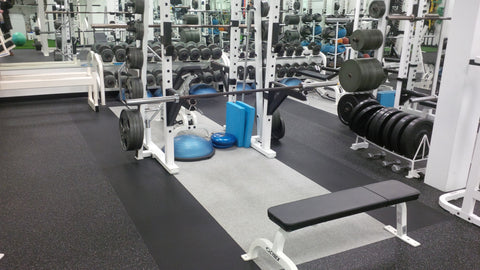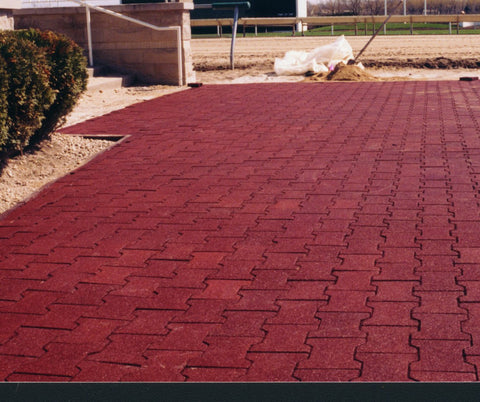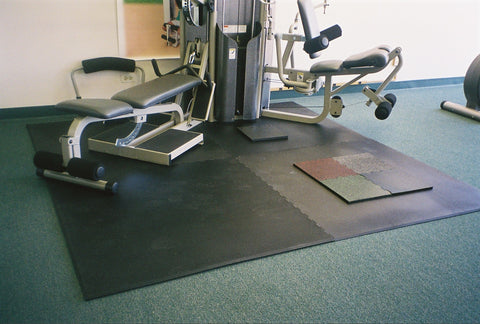What is the Best Gym Flooring for Home
When constructing a home gym, athletes often focus on choosing the right equipment and overlook the importance of a high-quality flooring system. Intuitively, this makes sense. When we envision a fitness facility, we think about the equipment available to us – the free weights, the cardiovascular and resistance machines, and the spaces designated for bodyweight exercises and stretching. The floor is rarely the first aspect that comes to mind.
What we need to consider, though, is that everybody who visits a gym interacts with the floor. It contributes to the overall appearance and functionality of the space, even if it is seldom talked about. The same is true for a home gym.
When it comes to creating your personal home gym, we urge you to put as much focus on the floor as you put on the equipment. When selecting the best gym flooring for home, the main points to address are the functionality and the installation and maintenance required for the floor.
1. Functionality
The purpose of a floor in any fitness facility is to allow visitors to perform at their best while staying safe and comfortable. Just like using the wrong type of equipment, if you use improper flooring, your performance and your fitness results will be hindered. Conversely, with the right equipment and the proper flooring, you will optimize your efforts and keep yourself safe at the same time.
 The first step to selecting the right floor for your gym is to consider what sort of exercises you plan to complete there. For instance, if you wanted an indoor space to practice basketball, hardwood or vinyl floors would be great choices, but rubber or turf would not make sense. For home gyms involving cardio machines and weightlifting, rubber flooring is the best choice.
The first step to selecting the right floor for your gym is to consider what sort of exercises you plan to complete there. For instance, if you wanted an indoor space to practice basketball, hardwood or vinyl floors would be great choices, but rubber or turf would not make sense. For home gyms involving cardio machines and weightlifting, rubber flooring is the best choice.
Rubber flooring, such as our line of POWERStock products, is cushioned and shock-absorbent to reduce the impact on athletes’ joints. It is also slip-resistant and has high surface traction, even when wet with sweat, which further reduces the risk of injury. These safety features give athletes peace of mind when surrounded by heavyweights and provide the comfort necessary to push their limits.
In addition to promoting safety and performance, rubber gym flooring creates a professional, aesthetic appearance that improves focus. Even if you’re working out in your garage or your basement, you want your gym to feel like a special space separated from everyday distractions. Installing a rubber floor comparable to those in elite facilities is a great way to provide that atmosphere.
2. Installation and Maintenance
The second component to consider when choosing your gym floor is the installation process and the maintenance required. Our POWERStock rubber gym kits keep these qualities in mind because we believe setting up and maintaining your gym should be easy. POWERStock fitness flooring comes in easy-to-lay rubber rolls and lay-and-lock varieties, making installation simple. Plus, the flooring can be picked up and relayed as necessary, if you choose to rearrange the setup of your gym.

When it comes to maintenance, rubber flooring is the best choice as it is easy to clean and bacteria resistant. There are no worries with flooding, either, since the rubber tiles or roll can simply be cleaned and relayed without enduring any permanent damage. We recommend choosing a flooring system that is made of 100% rubber, rather than rubber mixed with plastics. After enduring long-term wear and tear or sudden temperature changes, plastics can cause cracking in flooring surfaces, whereas 100% rubber products will not produce these results, thus keeping their maintenance to a minimum. Floors composed of 100% rubber will not need to be replaced as frequently as those containing plastics, either.
Lastly, in the same way, that rubber flooring protects the athlete and the equipment above, they also protect the subfloor underneath. There have been instances where people set up gyms in their garages or basements without adding a protective layer and they ended up cracking their original concrete floors. Cracked concrete can be a serious problem, as concrete is the foundational element of many houses. Homeowners can easily avoid a cracked concrete catastrophe by installing a rubber flooring surface. They’ll feel confident that their original floors are protected while they work out because the high-density rubber will absorb the impact of dropped weights and prevent potential subfloor damage.
Now that you’ve heard our reasons, what do you think? Do you use rubber flooring in your home gym? Why did you choose rubber?
If you liked this article and want more people to see it, please share using the icons below!




Comments (0)
There are no comments for this article. Be the first one to leave a message!